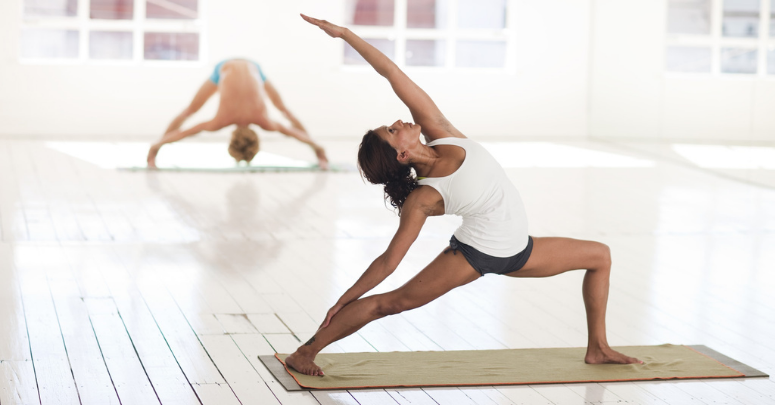
The first step in developing a comprehensive definition of mindfulness is to clarify what is meant by the term. Mindfulness is not a single concept but rather a concept that includes a range of experiences, and there are many ways of defining it. This article will examine several aspects, including the subthemes, sociocultural influences, as well the impact of popular literature and self help on mindfulness. This article will also cover the inability to find objective measures of mindfulness.
Mindfulness subthemes
One of the central themes of mindfulness is attending to present-moment experiences. It is a practice of focusing on the present moment, rather than dwelling on past or future events. This practice is crucial for developing self-awareness and increasing emotional resiliency. Simply put, mindfulness is paying attention to all that is happening around you. For mindfulness interventions, the five-aggregate model is helpful.
In the majority of the studies, the definition of mindfulness included a concrete attitude. This attitude is called non-evaluative. Researchers identified four subthemes within this attitude. The non-judgmental attitude is among these subthemes. This theme implies that we approach our experiences without evaluation or judgment. In addition, we learn how to notice different phenomena and how to think about them in the present. This research has important implications for workplace practices.

Mindfulness definitions influenced by socio-cultural factors
Recent research has focused on socio-cultural factors that influence the definition of mindfulness in African-American communities. Participants from both groups interpreted the same definition differently, despite the fact that it was common. Participants used the idea of mindfulness to enhance their individual well-being. While others used it to address societal and national problems, others saw it that way. These results raise questions about how cultural differences and social norms can impact our understanding of mindfulness.
For example, a socio-cultural perspective can lead to a reduction of personal responsibility and autonomy. Studies often overlook individual differences in mental processes, behavior, and personality. We are all different and each person is influenced by various factors. This is why it is difficult to make a generalization about a particular practice that will work for everyone. Furthermore, not every practice or theory is right for everyone. It is therefore important to consider the various definitions of mindfulness and determine which ones are most effective for you.
Mindfulness and the impact of self help or popular literature
In the past decade, more research has been conducted on mindfulness. These studies are expected to improve our understanding of mindfulness. The UK Mindfulness-All-Party Parliamentary Committee recently reviewed MBCT, and recommends it to people who suffer from recurrent or severe depression. However, mindfulness literature has had a major influence on our understanding.
While the scientific community has been skeptical about the impact of self-help literature on mindfulness, some studies have suggested that mindfulness is a powerful therapeutic intervention that can reduce symptoms of many psychological and physical health problems. Some practitioners also believe that the technique helps them to cope with daily stresses. The evidence on the subject is still not strong enough to support such claims. These concerns aside, mindfulness advocates continue to advocate for more research to understand the potential of mindfulness.

Absence of objective measures for mindfulness
Despite the growing interest in mindfulness, there are currently few objective measures to measure the effectiveness of the practice. Self-report instruments are the most commonly used to measure trait mindfulness. The self-reported mindfulness level increases with meditation practice. It can be linked to many positive outcomes including decreased stress and burnout as well as increased brain connectivity and executive functioning. Problem with self-report questionnaires: they don't always account for the many factors that can affect a person’s mindfulness experience.
Researchers developed the Freiburg Mindfulness Inventory in 2006 to help assess mindfulness. However, it can only be used as a qualitative tool. It has been used by researchers as a benchmark. FMI is valid and simple to use. It also measures the probability of someone noticing their thoughts and feelings.
FAQ
What do I need in order to practice yoga?
You'll need a pad (some are foldable), loose clothing, and something to put under your head as you lay down.
Also, you may need props like straps to hold your blocks, straps to support your bolsters, blankets or towels in order for some poses.
However, in general, you don't need any other things. You must have a desire for positive change in your life and be willing to dedicate yourself to yoga.
What happens if you stop doing yoga?
It is normal to lose interest after a while. However, your body may become stiffer if you stop practicing yoga regularly. Poor posture, lack exercise, and simply ageing can cause stiffness.
If you find it less flexible over time, consider retaking a few classes. It's important to maintain a regular routine. Exercise can help strengthen your bones.
What are the differences between Hatha and Ashtanga, Vinyasa Power Yoga, Power Yogas, Kripalu, Bikram, Power Yogas, Vinyasa and Power Yogas? ?
There are many different types of yoga. Each style offers its own way of finding balance in our lives.
Some of the most popular forms of yoga include:
Hatha: This involves stretching out and focusing on core strength and flexibility.
Ashtanga is a slow-paced, strength-building exercise that focuses on Ashtanga.
Vinyasa - This type of yoga incorporates fast-flowing sequences that allow you to breathe deeply.
Power - A form of power yoga that includes more challenging moves.
Kripla – One of the oldest forms if yoga that dates back thousands upon thousands of years.
Bikram is a type of yoga that can be practiced in heated rooms.
Statistics
- According to the Agency for Healthcare Research and Quality, falls are incredibly common among older adults in nursing facilities. Even the simplest ones can increase the risk of death (24). (healthline.com)
- The American Psychological Association recently shared that 84% of American adults feel the impact of prolonged stress (5). (healthline.com)
- According to calorie estimates calculated at Harvard Medical School, the average 125-pound person burns about 120 calories in a half hour of hatha yoga, and a 185-pound person burns about 178 calories in that half hour. (everydayhealth.com)
- In comparison, a 125-pound person is estimated to burn 135 calories in 30 minutes of walking (at a pace of 15-minute miles) and 210 calories bicycling at a moderate pace on a stationary bike. (everydayhealth.com)
- Start your Fall off right with 20% off All Access Membership when you sign up by 9/25! (corepoweryoga.com)
External Links
How To
Can yoga help with menopause symptoms?
Yoga, an ancient practice, originated in India. It focuses primarily on stretching, breathing and meditation. It has been used over thousands of year to stay fit. Recently, it has become increasingly popular as people seek alternative ways to keep healthy and active during periods of stress and illness.
Yoga is about using postures (asanas), in order to stretch muscles and improve flexibility. This helps to relieve tension and build strength and stamina.
There are many types and styles of yoga. Each type is focused on different aspects of the human body, such relaxation, breath, stretching, or breathing.
All forms of yoga aim to bring about balance in the mind and body. Yoga has many benefits, including improved fitness, weight loss, improved sleep quality, energy levels, and reduced stress.
Many studies have shown yoga to be effective in treating anxiety, depression and insomnia. But, it is difficult to prove its effectiveness for other health problems such as menopause symptoms.
Yoga can help you feel happier and healthier, as well as teach you how to relax in stressful situations. This could be very helpful for menopause.
It is important to note that yoga can cause muscle soreness after exercise, so starting at a low-intensity level is wise. Talk to your doctor if you have any questions about your condition or are uncertain if yoga would be beneficial for you.